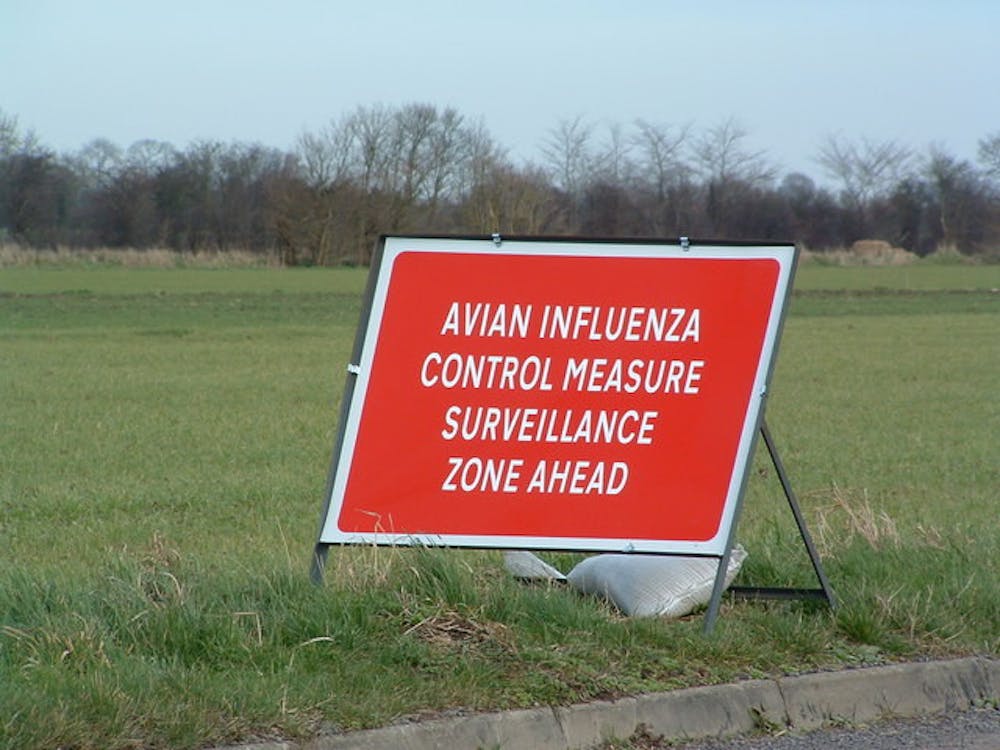By Aneri Upadhyay
Staff Writer
One of the largest makers of fresh eggs in the United States, Cal-Maine Foods, Inc., has found bird flu in one of their egg factories in Texas.
As reported by the CDC, bird flu occurs in the wild naturally, but can affect domestic animals. Infected birds can spread the disease to other animals through their saliva, nasal secretions or feces. Others can also be contaminated by surfaces infected birds have touched.
There are two types of bird flu: Low Pathogenic Avian Influenza and Highly Pathogenic Avian Influenza. Low Pathogenic Avian Influenza can cause little or no symptoms in poultry. Some common symptoms are ruffled feathers and decreased egg production. Highly Pathogenic Avian Influenza is more severe in poultry and has a high mortality rate.
According to NPR, Cal-Maine Foods Inc. has stopped egg production in a factory in Texas. The company has removed 1.6 million laying hens since the flu was discovered. This is a common technique in commercial farms, according to the Environmental Protection Agency.
Amy Hagerman, an associate professor of agricultural economics at Oklahoma State University, spoke about the impact this could have on consumers in an interview with NPR.
"Any time you have an outbreak of highly pathogenic avian influenza in a large poultry producer like this, it has the potential to impact the market, because you're taking a large number of egg-laying birds out of production all at once," Hagerman said.
"But at least temporarily, you see that sharp decline in the total eggs laid and as a result you see a price increase usually at the grocery store," she adds.
Bird flu has also been found in dairy herds in Texas, Kansas, Michigan, New Mexico and Idaho.
According to the CDC, the chance of someone getting infected from bird flu by eating contaminated eggs is very low. They also stated that if the eggs are stored and cooked properly, there is no way the disease can transmit to a person.
As reported by USA Today, the discovery of bird flu at Cal-Maine came a week after someone in Texas tested positive for avian flu by coming in contact with infected dairy cattle. Their main symptom was pink eye. This is the second known human case of bird flu in the United States.
The amount of depopulated chickens accounted for 3.6% of Cal-Maine’s total flock. Cal-Maine is trying “to secure production from other facilities” so that customers are less affected by the outbreak.
Bird flu has cost the U.S. government $660 million due to an increase of labor and shortage of supply, and has led to a steady increase in price for eggs and poultry. 58 million birds were killed last year to limit the spread of the virus.
According to AP News, the spread of avian flu to another species is concerning. Daren Detwiler, a food safety and policy expert at Northeastern University is one of the concerned experts.
“We don’t have a magic forcefield, an invisible shield that protects land and water runoff from impacting other species,” Detwiler said in an interview with AP News. “There is a concern in terms of how this might impact other markets, the egg market, the beef market.”
Although avian flu naturally spreads among animals, farmers and healthcare experts are working hard to keep animals and people safe from the disease.







